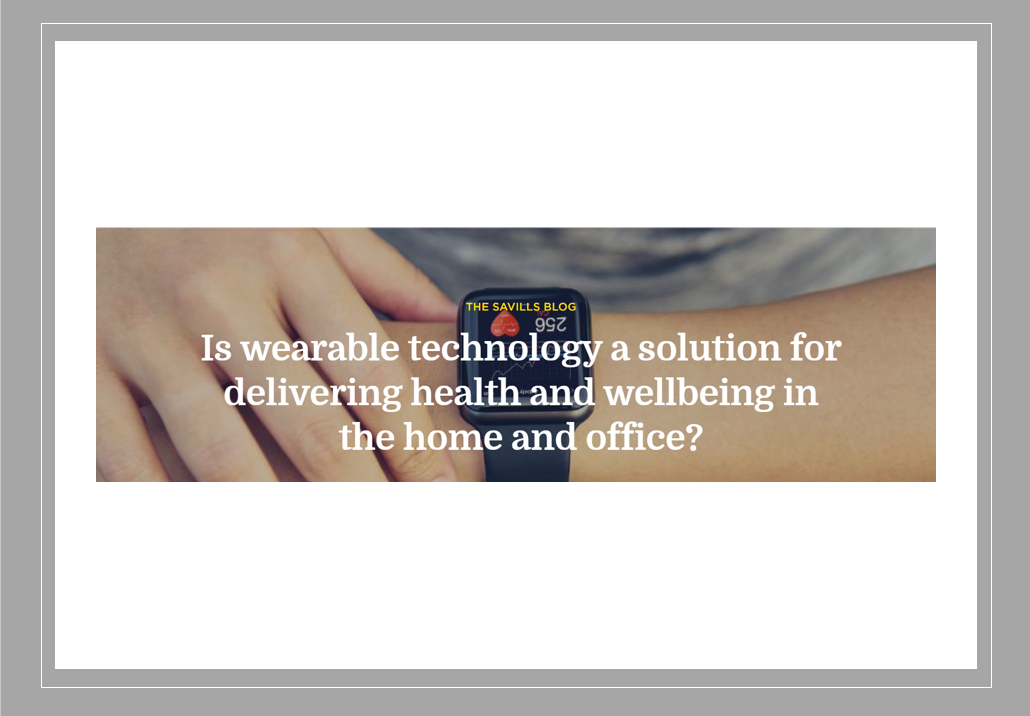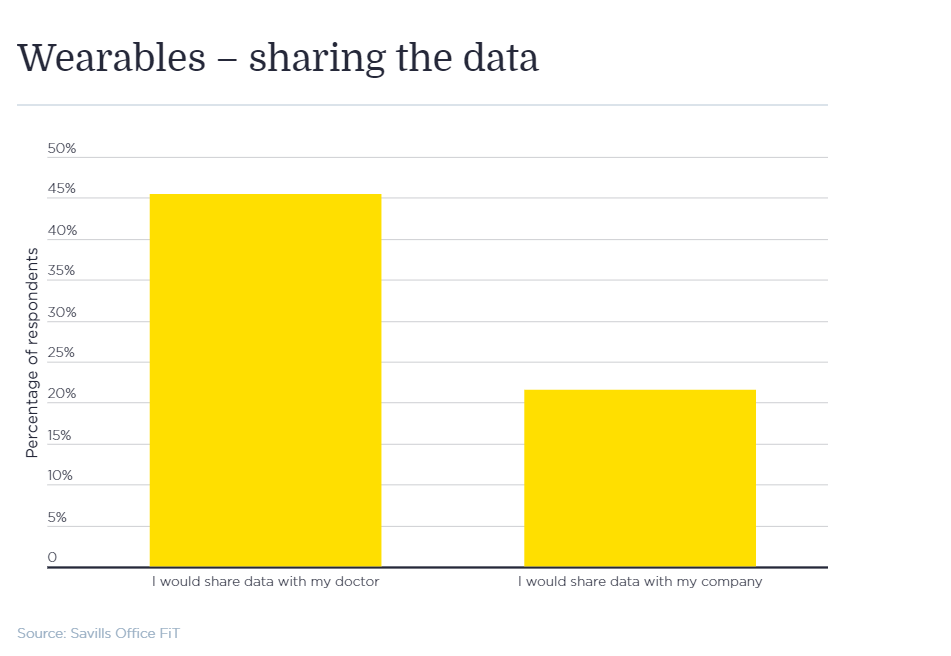Lifestyle
Is wearable technology a solution for delivering health and wellbeing in the home and office?
published by
Fran Puddefoot

Over £43 billion of capital was raised by companies within the Digital Health sector in the last five years, according to data from Pitchbook. As we seek to understand the effects of Covid-19, one of the emerging questions is to what degree should we take responsibility for our own health and wellbeing in the home and the workplace?
Large technology companies including Apple place health as one of the top priorities for future growth. It’s been said that the Apple Watch isn’t just about keeping time and staying in touch, but is a way into the trillion-pound healthcare industry.
Why should the UK property industry take note? As we found in our What Workers Want survey of office workers in 2019, there is a direct positive correlation between workers’ happiness and their mental and physical wellbeing. In this new coronavirus world, the move to a hybrid style of working, which involves working from home more regularly, means the need for organisations to deliver on occupational health must now encompass the home. The question is to what degree organisations will adopt a wearable strategy for workers in the office and at home.
A British Council for Offices (BCO) report in 2016 summarised that wearables are part of a larger trend in intelligent buildings to give inhabitants more control over their environment and create more personalised experiences. This personalised approach can include controlling the temperature and lighting at a work station, assessing levels of stress and even correcting someone’s posture at their desk. Following the lockdown, we wondered whether enabling a seamless connectivity to the employee, via wearables, would still become the norm rather than an exception.
Savills has surveyed office employees on the wearable issue in the past. An earlier 2016 iteration of What Workers Want asked the question around tracking employees’ movement in the office. We found that two-thirds were deeply uncomfortable with that idea and the notion of tracking seemed a one-way benefit to the employer. In a coronavirus-aware world, we wanted to understand whether this attitude has changed.
To answer these questions, as part of the Office FiT UK survey we carried out in April this year, we took the opportunity to ask about wearables. The positive story is that the vast majority (87 per cent) of respondents already have, or will have, a wearable device (see chart 1, below).
The next big question was the sharing of information. We asked about respondents’ willingness to share the data created from the wearable device – specifically sharing with the company that they work for or their doctor. For both of these responses, the willingness around sharing data is relatively low (see chart 2, below).
So what can we conclude from these results? Despite there being a lot of investment in this sector and a strong appetite for people to adopt this technology for their personal day-to-day use, there still appears to be a bridge of trust to build so employees feel sufficiently comfortable sharing their data with their employers for their benefit.
Unless and until there is a shift in this user sentiment, the focus for developers and landlords is how to deliver the best technology solutions for occupiers, while also remaining committed to the fundamentals of ensuring health and wellbeing through good design.

![]()
Further Information
Read more: What role will technology play in the return to the new normal?
Author: Nicky Wightman – Director – Global Occupier Trends, Prop Tech
prev
Articles
Will ‘slow streets’ & changes to city layouts outlast Covid-19?
Articles
Grand Designs’ Kevin McCloud reveals his top renovation tips
Next
Subscribe to our newsletter